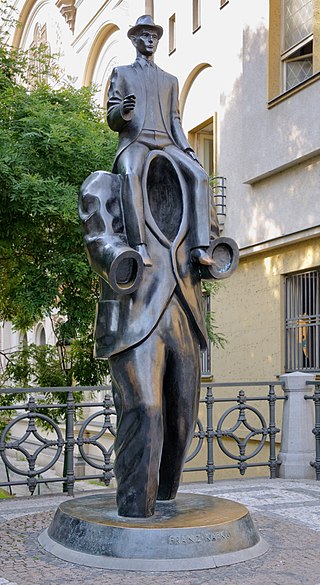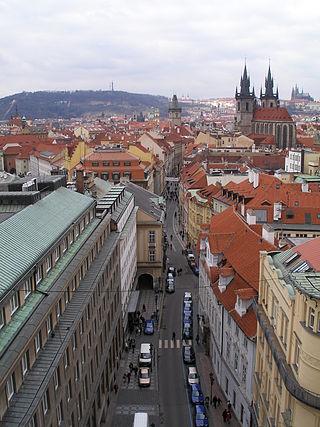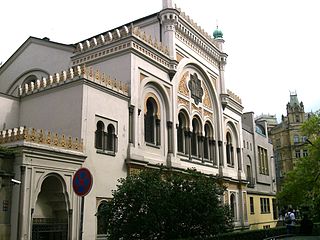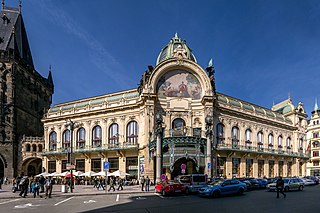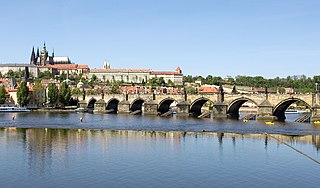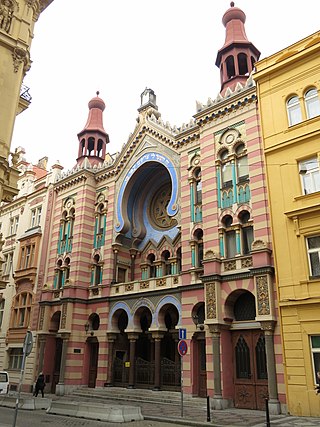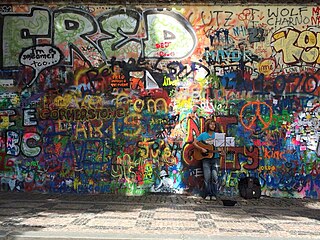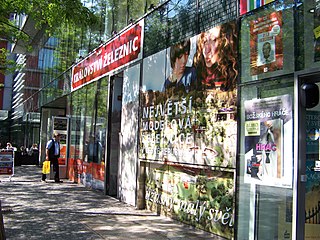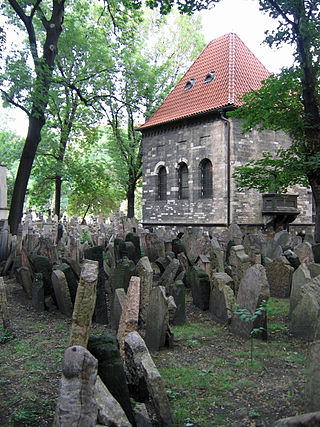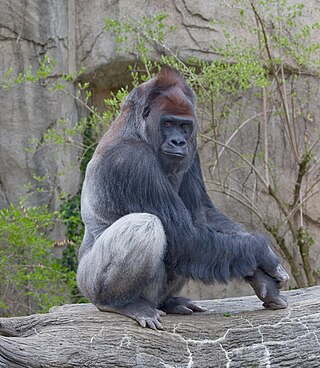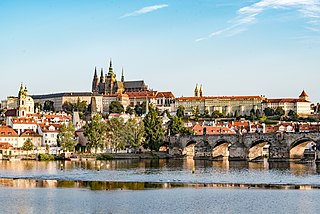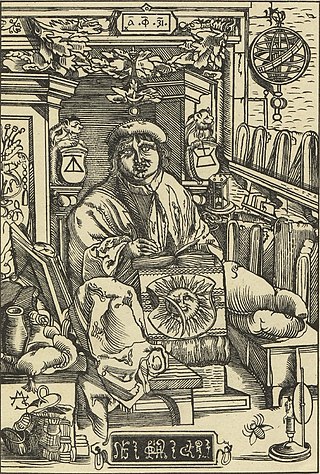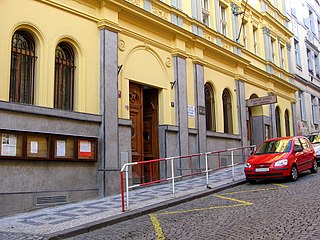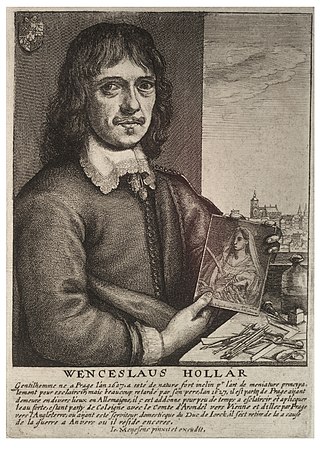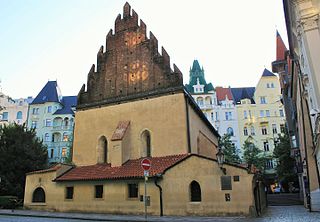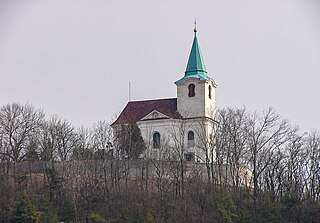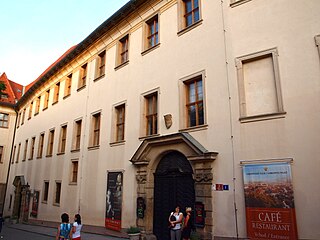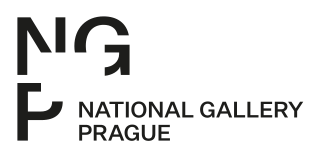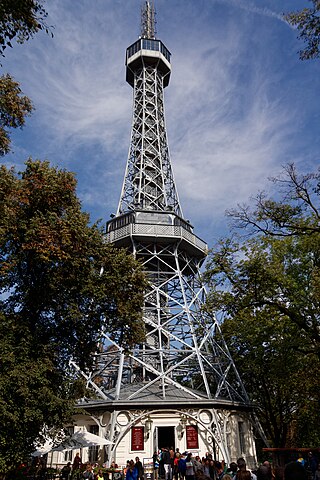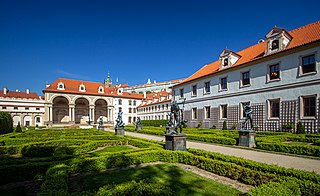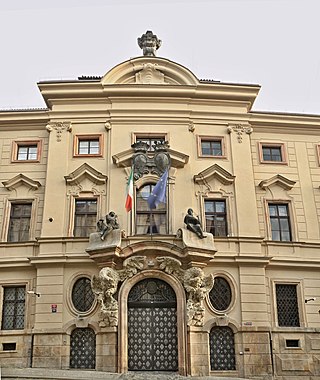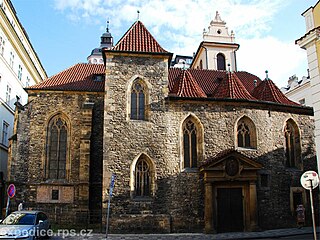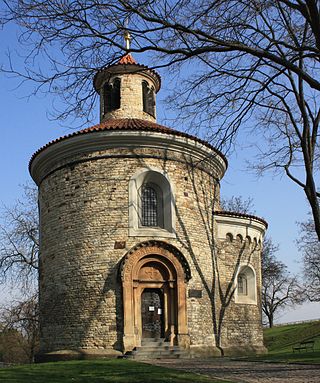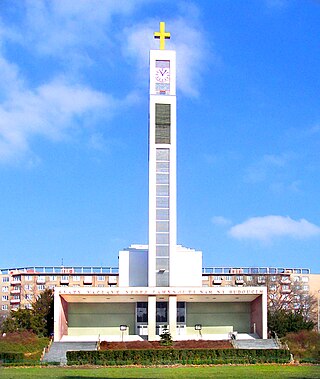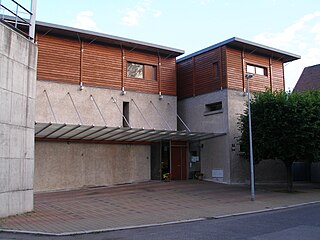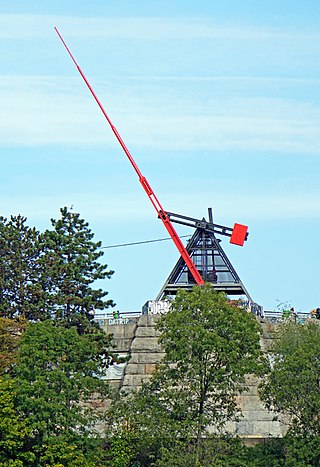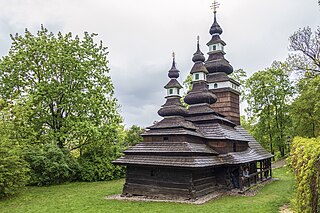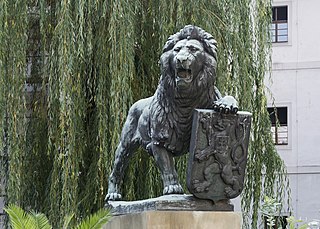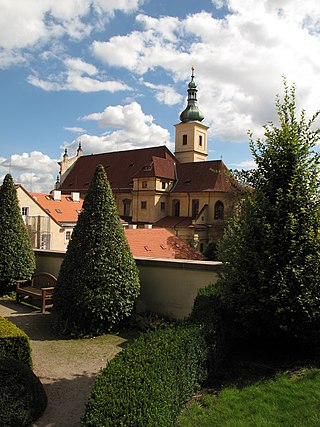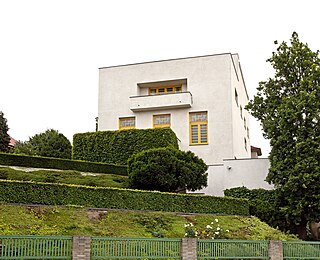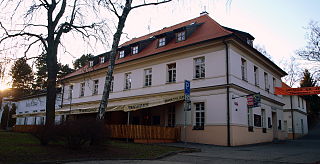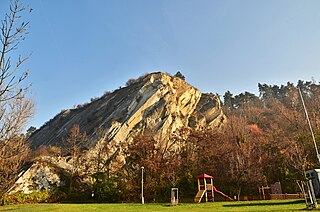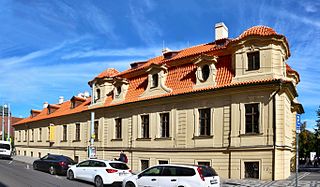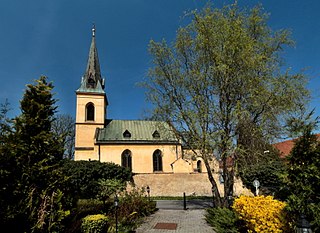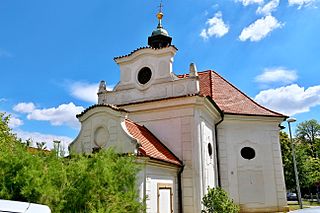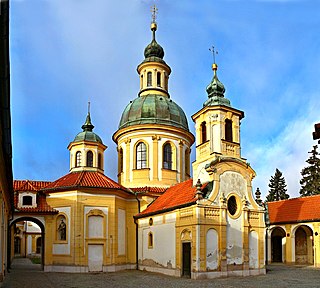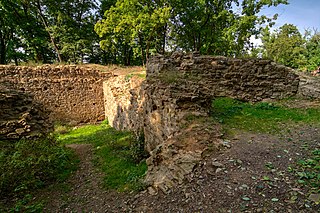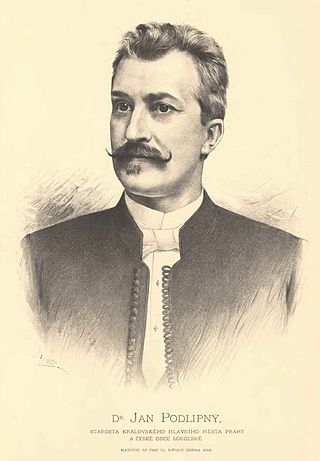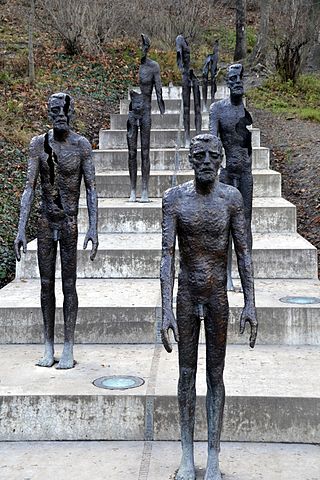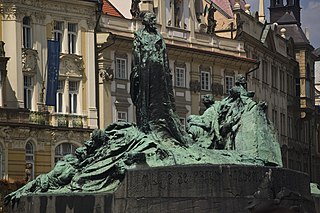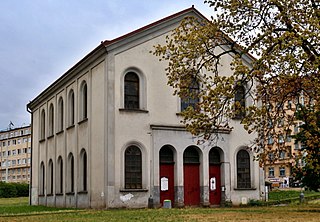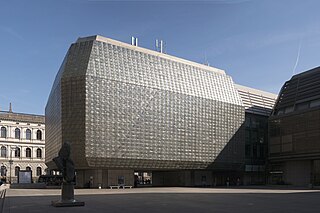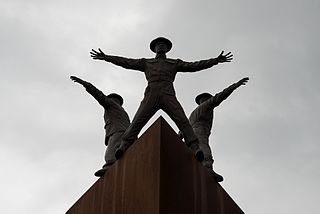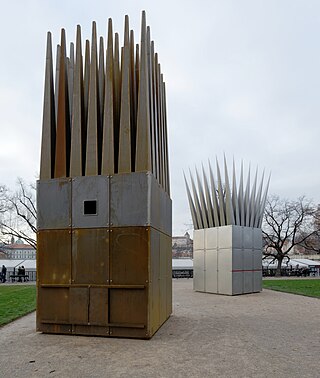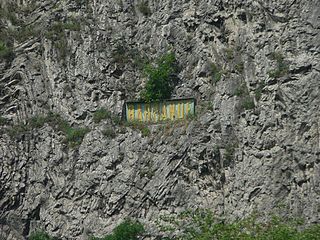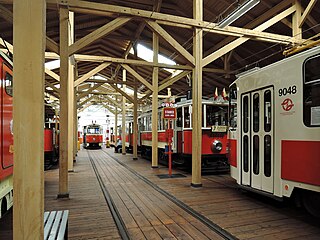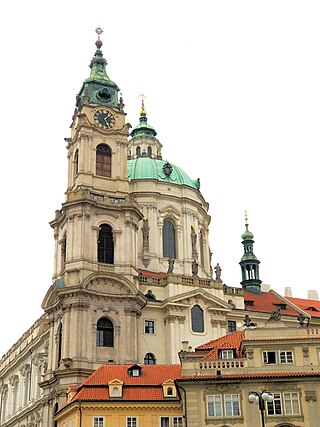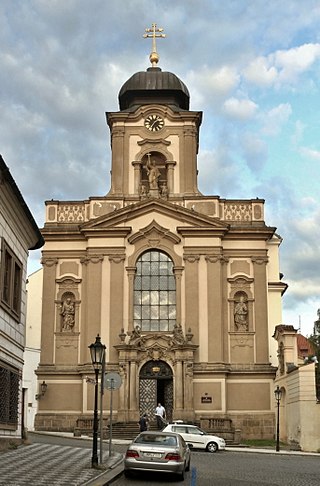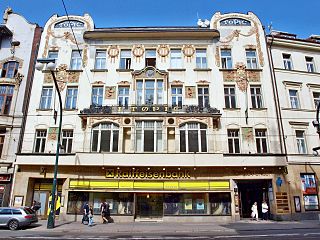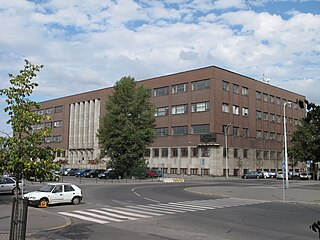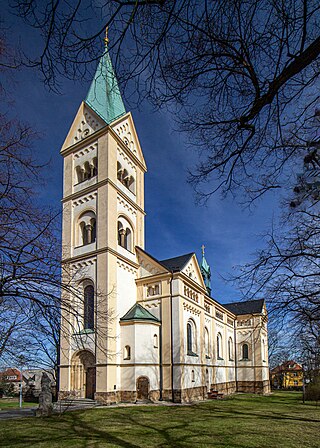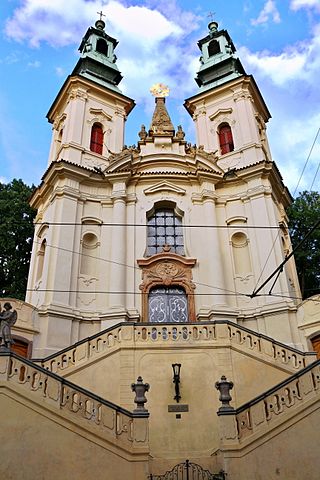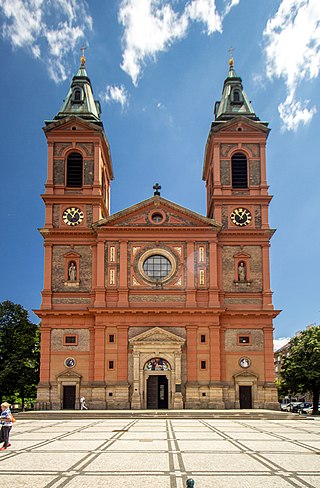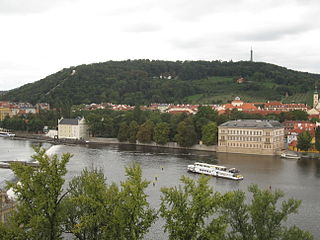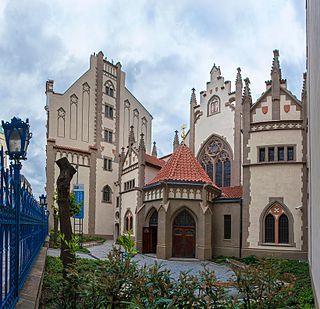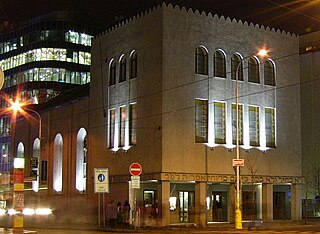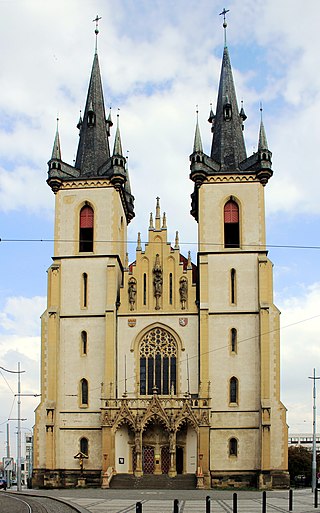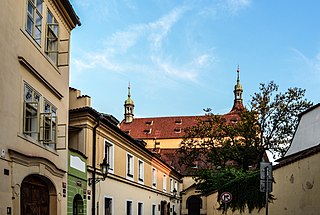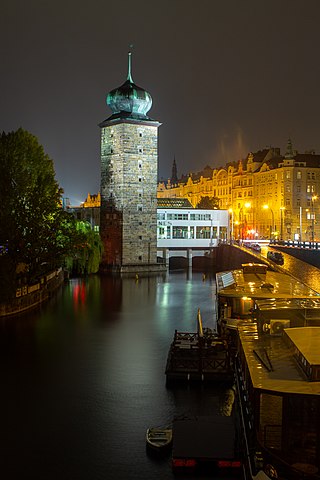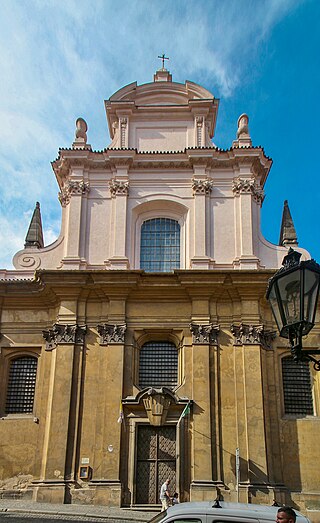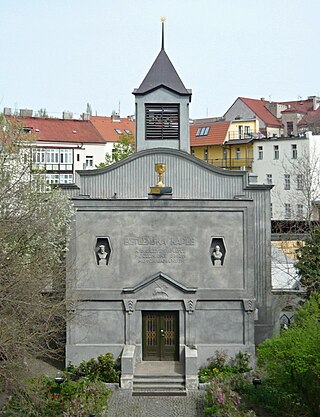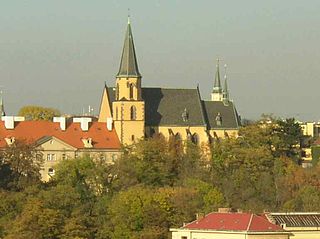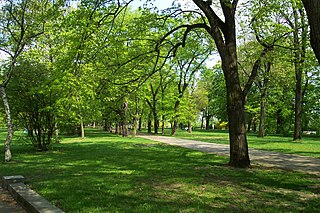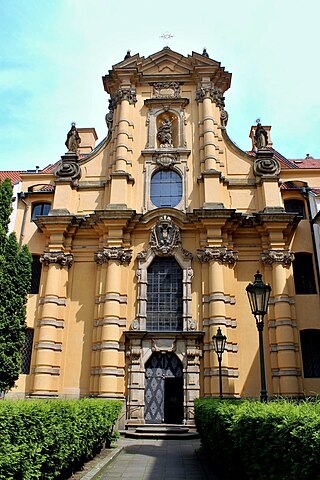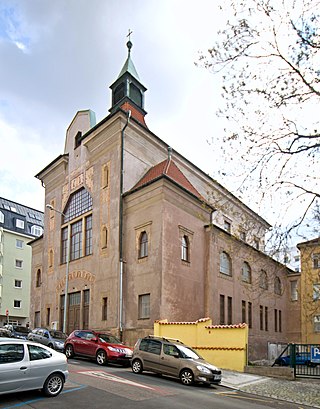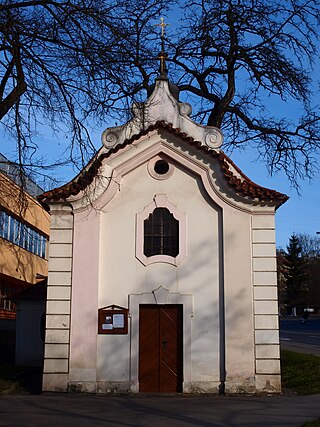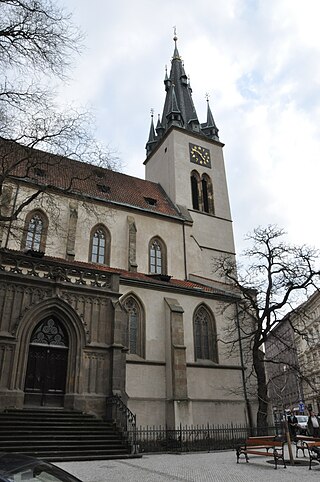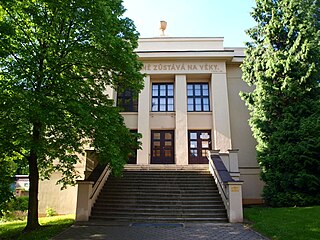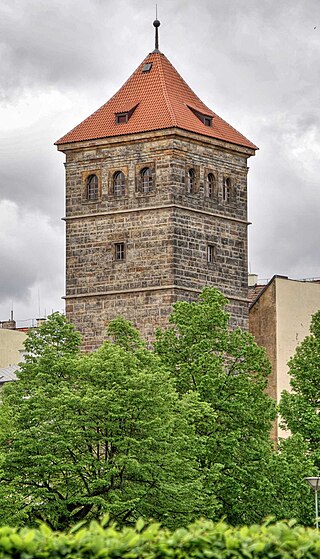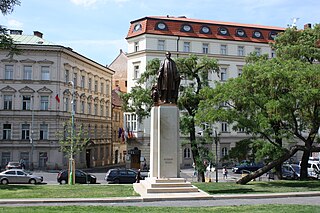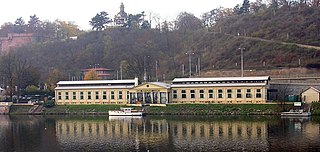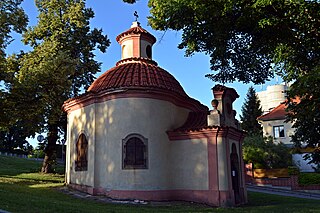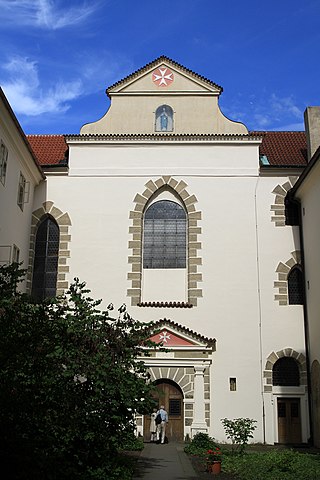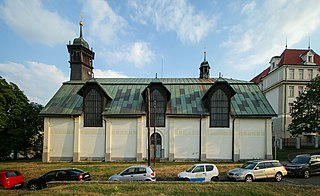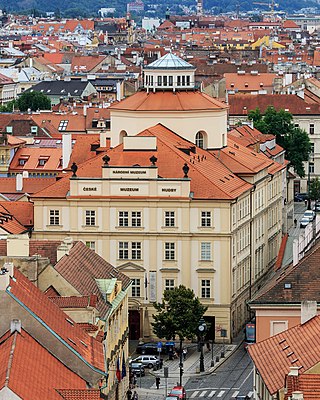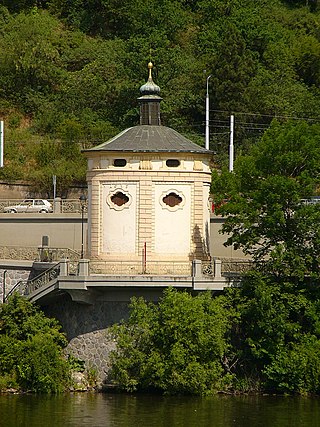100 Sights in Prague, Czechia (with Map and Images)
Legend
Welcome to your journey through the most beautiful sights in Prague, Czechia! Whether you want to discover the city's historical treasures or experience its modern highlights, you'll find everything your heart desires here. Be inspired by our selection and plan your unforgettable adventure in Prague. Dive into the diversity of this fascinating city and discover everything it has to offer.
Sightseeing Tours in PragueActivities in Prague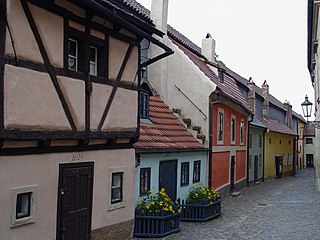
Golden Lane is a street situated in Prague Castle, Czech Republic. Originally built in the 16th century to house Rudolf II's castle guards, it takes its name from the goldsmiths that lived there in the 17th century.
A statue of Franz Kafka by artist Jaroslav Róna was installed on Vězeňská street in the Jewish Quarter of Prague, Czech Republic in December 2003. It is situated near the Spanish Synagogue. It depicts Franz Kafka riding on the shoulders of a headless figure, in reference to the author's 1912 story "Description of a Struggle".
The Head of Franz Kafka, also known as the Statue of Kafka, is an outdoor kinetic sculpture by David Černý depicting Bohemian German-language writer Franz Kafka, installed on 31. October 2014 outside of the Quadrio shopping mall in Prague, Czech Republic.
Celetná is a street in the Old Town, Prague, connecting the Old Town Square with the Powder Gate. It is one of the oldest streets in Prague and is part of the Royal Route. The street is approximately 400 meters long and trams once ran on it, today most of the street has the status of a pedestrian zone.
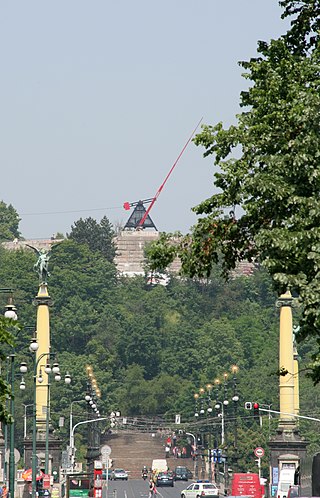
Letná is a hill overlooking Prague historic centre and Vltava River just besides Prague Castle. It neighbours Stromovka, the largest park in Prague. The hill belongs to Holešovice and Bubeneč quarters of Prague 7.
The Spanish Synagogue is a former Reform Jewish synagogue, located in the area of the so-called Jewish Town, Prague, in the Czech Republic. The synagogue was completed in 1868 in the Moorish Revival style on the site of the presumably oldest synagogue, Old School. In 1955 the former synagogue was permanently repurposed as a Jewish museum and is administered by the Jewish Museum in Prague.
Wikipedia: Spanish Synagogue (Prague) (EN), Heritage Website
Municipal House is a civic building that houses Smetana Hall, a celebrated concert venue, in Prague, Czech Republic. It is located on Náměstí Republiky next to the Powder Gate in the centre of the city.
Charles Bridge is a medieval stone arch bridge that crosses the Vltava river in Prague, Czech Republic. Its construction started in 1357 under the auspices of King Charles IV, and finished in the early 15th century. The bridge replaced the old Judith Bridge built 1158–1172 that had been badly damaged by a flood in 1342. This new bridge was originally called Stone Bridge or Prague Bridge, but has been referred to as "Charles Bridge" since 1870.
The Jubilee Synagogue, also known as the Jerusalem Synagogue, is an Orthodox Jewish synagogue, located on Jerusalem Street in the Nové Město district of Prague, in the Czech Republic. It is the largest synagogue in Prague.
The Lennon Wall or John Lennon Wall, located at Velkopřevorské náměstí, Malá Strana, is a historic legal graffiti wall in Prague, Czechia. After the 1980 murder of John Lennon a mural of Lennon was painted by an unknown artist onto the wall and as more people expanded upon it, the wall slowly became a place for free expression of then communist Czechoslovakia. It has historically been used for demonstrations and carries a central theme of John Lennon, but it also features designs relating to local and global causes such as global warming. The wall has also inspired other walls across the globe, such as the Hong Kong Lennon wall.
The Kingdom of Railways is primarily a set of several model railroads in 1:87 scale. Particularly noteworthy is the exhibition located on the -2nd floor, presenting a simplified railway model of the Czech Republic. The trackage contains models of important buildings in the Czech Republic and also several moving cars. In addition, some locomotives have cameras in the front and they broadcast live footage of the train to the cinema hall, which is located near the tracks. The trackage also alternates between day and night periods in regular cycles.
The Old Jewish Cemetery is a Jewish cemetery in Prague, Czech Republic, which is one of the largest of its kind in Europe and one of the most important Jewish historical monuments in Prague. It served its purpose from the first half of the 15th century until 1786. Renowned personalities of the local Jewish community were buried here; among them rabbi Jehuda Liva ben Becalel – Maharal, businessman Mordecai Meisel (1528–1601), historian David Gans and rabbi David Oppenheim (1664–1736). Today the cemetery is administered by the Jewish Museum in Prague.
13. red pandas
The red panda, also known as the lesser panda, is a small mammal native to the eastern Himalayas and southwestern China. It has dense reddish-brown fur with a black belly and legs, white-lined ears, a mostly white muzzle and a ringed tail. Its head-to-body length is 51–63.5 cm (20.1–25.0 in) with a 28–48.5 cm (11.0–19.1 in) tail, and it weighs between 3.2 and 15 kg. It is well adapted to climbing due to its flexible joints and curved semi-retractile claws.
14. gorillas
The western lowland gorilla is one of two Critically Endangered subspecies of the western gorilla that lives in montane, primary and secondary forest and lowland swampland in central Africa in Angola, Cameroon, Central African Republic, Republic of the Congo, Democratic Republic of the Congo, Equatorial Guinea and Gabon. It is the nominate subspecies of the western gorilla, and the smallest of the four gorilla subspecies.
15. Prague Palace
Prague Castle is a castle complex in Prague, Czech Republic serving as the official residence and workplace of the president of the Czech Republic. Built in the 9th century, the castle has long served as the seat of power for kings of Bohemia, Holy Roman emperors, and presidents of Czechoslovakia. As such, the term "Prague Castle" or simply the "Castle" or "the Hrad" are often used as metonymy for the president and his staff and advisors. The Bohemian Crown Jewels are kept within a hidden room inside it.
16. Francisk Skaryna
Francysk Skaryna was a Belarusian humanist, physician, and translator. He is known to be one of the first book printers in the Grand Duchy of Lithuania and in all of Eastern Europe, laying the groundwork for the development of the Belarusian izvod of the Church Slavonic language.
17. Žižkovské divadlo Járy Cimrmana
The Jára Cimrman Theatre is a Prague theatre company operating since the late 1960s. Its repertoire consists of comic plays by Ladislav Smoljak and Zdeněk Svěrák on the theme of the fictional Czech genius Jára Cimrman, who is claimed to be the original author of these plays. Traditionally, only men play in the theatre, without acting education – the only exceptions are the professional reinforcements Miroslav Táborský, Vojtěch Kotek, Josef Čepelka and Ondřej Vetchý, who were cast after a series of deaths of several core actors of the ensemble. It is one of the most successful and popular Czech authorial theatres and Czech post-war theatres in general.
18. Václav Hollar
Wenceslaus Hollar was a prolific and accomplished Bohemian graphic artist of the 17th century, who spent much of his life in England. He is known to German speakers as Wenzel Hollar; and to Czech speakers as Václav Hollar. He is particularly noted for his engravings and etchings. He was born in Prague, died in London, and was buried at St Margaret's Church, Westminster.
19. Žižkov Television Tower
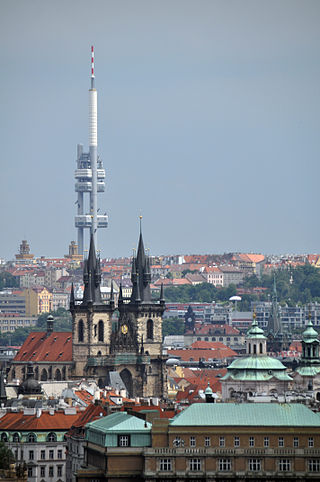
The Žižkov Television Tower is a transmitter tower built in Prague between 1985 and 1992. Designed by the architect Václav Aulický and the structural engineer Jiří Kozák, it stands high above the city's traditional skyline from its position on top of a hill in the district of Žižkov, from which it takes its name. The tower is an example of high-tech architecture.
20. Old New Synagogue
The Old New Synagogue, also called the Altneuschul, is an Orthodox Jewish congregation and synagogue, located in Josefov, Prague, in the Czech Republic. The synagogue is Europe's oldest active synagogue. Completed in 1270, it is also the oldest surviving medieval synagogue of twin-nave design.
21. svatý Matěj
The Church of St. Matthew in Dejvice is a small Roman Catholic parish church built in 1771 in the Baroque style. It is located with the adjacent cemetery on a hill above the Šárka Valley in Prague 6-Dejvice and forms a dominant feature of lower Šárka. It falls under the responsibility of the Second Prague Vicariate of the Archdiocese of Prague. The church dedicated to the Apostle Matthew is the original destination of the St. Matthew's Fair, known for its gingerbread nativity scenes.
22. Lobkovický palác
The Lobkowicz Palace is a part of the Prague Castle complex in Prague, Czech Republic. It is the only privately owned building in the Prague Castle complex and houses the Lobkowicz Collections and Museum.
23. Dejvické divadlo
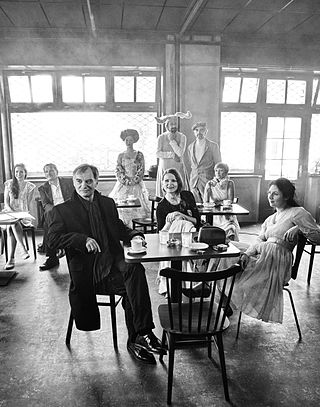
The Dejvice Theatre is a theatre in Prague. It is located in Zelená Street in Prague-Dejvice, approximately 700 m north of the Dejvická metro station. It was founded in 1992 and has had the status of a professional scene since 1993.
24. National Gallery in Prague - Trade Fair Palace
The National Gallery Prague, formerly the National Gallery in Prague, is a state-owned art gallery in Prague, which manages the largest collection of art in the Czech Republic and presents masterpieces of Czech and international fine art in permanent and temporary exhibitions. The collections of the gallery are not housed in a single building, but are presented in a number of historic structures within the city of Prague, as well as other places. The largest of the gallery sites is the Trade Fair Palace, which houses the National Gallery's collection of modern art. Other important exhibition spaces are located in the Convent of St Agnes of Bohemia, the Kinský Palace, the Salm Palace, the Schwarzenberg Palace, the Sternberg Palace, and the Wallenstein Riding School. Founded in 1796, it is one of the world's oldest public art galleries and one of the largest museums in Central Europe.
25. Petrin Observation Tower
The Petřín Lookout Tower is a steel-framework tower 63.5 metres (208 ft) tall on Petřín Hill in Prague, built in 1891. It resembles the Eiffel Tower and was used as an observation tower as well as a transmission tower. Today the tower is a major tourist attraction.
26. Waldstein Garden
The Wallenstein Garden is one of the most distinctive buildings of the Czech early Baroque. It is located in Prague's Lesser Town and is part of the Wallenstein Palace, the seat of the Senate of the Parliament of the Czech Republic. The publicly accessible garden in Italian style, divided by trimmed hedges, is equipped with water features, sculptural decorations, a grotto wall and a monumental sala terrena. Occasionally, concerts and exhibitions are held here.
27. Thun-Hohenštejnský palác
The Kolowrat Palace is a high Baroque building in Prague's Lesser Town, with a façade facing Nerudova Street, built in 1716–1721. The palace is part of the palace complex, the second part of which consists of the Renaissance building of the Palace of the Lords of Hradec, later also called the Slavata Palace. Both palaces are protected as cultural monuments.
28. Saint Martin in the Wall
The Church of St. Martin in the Wall is a Gothic church with Romanesque grounds, situated in the Old Town of Prague, Czech Republic. It was built between 1178 and 1187 in the village of Újezd, thereafter known as Újezd u svatého Martina. The south wall of the church was built adjacent to the walls of the Old Town, hence the full name of the church "in the wall". The church belongs to the Evangelical Church of Czech Brethren.
Wikipedia: Church of St. Martin in the Wall (EN), Website, Heritage Website
29. Saint Martin
The Rotunda of St. Martin is located at Vyšehrad and is the oldest preserved rotunda in Prague. Since its construction to the present day, the building has undergone many changes, both architecturally and in the way it is used. The rotunda was built in the Romanesque style, and thanks to later reconstructions, this style was preserved through re-Romanization. The current owner is the Vyšehrad Chapter, masses are regularly held in the rotunda and it is possible to look inside by appointment.
30. Studio DK;Divadlo Kámen
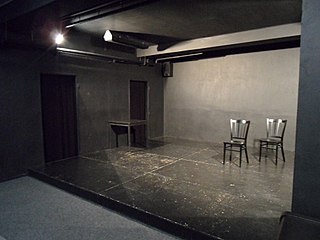
The Kámen Theatre is a Prague authorial theatre and art salon, operating since 2007 in its own theatre studio for 50 spectators near the Invalidovna metro station in Prague's Karlín district. The Kámen Theatre was founded in 1998 and has created over 35 productions during its existence. Initially, it played mainly in a few Prague clubs, but from 2004 to 2007 it played regularly in the Jára Cimrman Žižkov Theater and the Celetná Theater.
31. svatý Václav
Kostel svatého Václava v Nuslích je římskokatolický farní kostel. Neoklasicistní kostelík byl postaven v roce povýšení Nuslí císařem Františkem Josefem I. na královské město (1898) jako součást školního areálu ve Svatoslavově ulici v Nuslích. Nachází se na nároží ulic Vladimírova a Pod Vilami 333/1 čelem do přilehlého parčíku v městské části Praha 4-Nusle.
32. U Jákobova žebříku
The Church of the Jacob Ladder is the sacral building of the Kobylisy choir of the Evangelical Church of Czech Brethren, built in the northern part of Prague, Kobylisy, in the street U Školské zahrady. Its construction was planned at the time of political relaxation in the late 1960s as a replacement for an unsatisfactory, until then used temporary prayer room. The architect of the building is the Swiss Ernst Gisel and its ceremonial opening took place in 1971. Subsequently, in 1995 and 2001 the reconstruction and reconstruction of the building according to the designs of Czech architects Radovan Schaufler and Jakub Roskovec.
33. Prague State Opera
The State Opera is an opera house in Prague, Czech Republic. It is part of the National Theatre of the Czech Republic, founded by Ministry of Culture of the Czech Republic in 1992. The theatre itself originally opened in 1888 as the New German Theatre and from 1949 to 1989 it was known as the Smetana Theatre. More recently it was renamed the Prague State Opera. Currently it is home to approximately 300 performances a year.
34. Prague Metronome
The Prague Metronome is a 75-foot-tall (23 m) functioning metronome in Letná Park, overlooking the Vltava River and the city center of Prague. The kinetic sculpture was erected in 1991, on the plinth left vacant by the late-1962 demolition of an enormous monument to former Soviet leader Joseph Stalin. The silent red metronome was designed by international artist Vratislav Novák, and officially named "Time Machine". It may be the largest metronome in the world, although Geneva and Gdańsk each have a larger pendulum clock.
35. Místo letecké nehody 1975
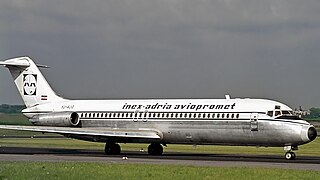
Inex-Adria Aviopromet Flight 450, JP 450, was an international charter flight from Tivat in the Socialist Federal Republic of Yugoslavia to Prague, Czechoslovakia which crashed in the Prague suburb of Suchdol on October 30, 1975, at 09:20 AM. The McDonnell Douglas DC-9-32 with 115 passengers and 5 crew on board descended, under Instrument Meteorological Conditions (IMC), below defined Minimum Descent Altitude (MDA) during the final approach to Prague Ruzyně Airport RWY 25, entered a gorge above Vltava river, and was unable to outclimb the rising terrain. 75 of the 120 occupants died during the crash itself while 4 others died later in hospital. The accident remains the worst aviation disaster on the Czech Republic soil.
36. svatý archanděl Michael
The Church of St. Michael the Archangel, also the Carpathian Church of St. Michael, etc., is an all-wooden Orthodox, originally Greek Catholic church of the Lemko type, built in 1625 in the village of Velké Loučky near Mukachevo, in 1793 it was sold and moved to Medvedovce. In 1929, it was dismantled in Carpathian Ruthenia, transported and rebuilt in the Kinský Garden in Smíchov in Prague 5. On October 28, 2020, the church burned down.
37. Memorial of National Literature
The Museum of Czech Literature (MCL) - The Museum of Literature is a cultural, museum, scientific and educational institution that acquires, collects, processes, registers and provides access to a collection related to the development of literature and book culture in the Czech lands, including documents related to the lives, works and legacy of important personalities of Czech literature from the 18th century to the present. It fulfils the function of a museum within the meaning of the provisions of Section 10 para. 6 of Act No. 122/2000 Coll., on the Protection of Museum Collections. From 1952 it was located at Strahovské nádvoří 132/1, 118 00 Prague-Hradčany, but after almost seventy years it moved from the Strahov Monastery to the Petschek Villa in Bubeneč and opened its collections to the public as the Museum of Literature.
38. Our Lady Victorious
The Church of Our Lady of Victories, also referred as the Shrine of the Infant Jesus of Prague, in Malá Strana, the "Lesser Quarter" of Prague, is a church governed and administered by the Discalced Carmelites.
Wikipedia: Church of Our Lady of Victories (EN), Website, Website, Heritage Website
39. Villa Müller
The Villa Müller is a Modernist villa in Prague, Czech Republic built in 1930. It was designed by Adolf Loos as a residence for František Müller, co-owner of the Kapsa-Müller construction company from Plzeň.
40. Divadlo Na Jezerce
The Na Jezerce Theatre (DNJ) operates in Prague 4 – Nusle in the environment of Jezerka Park, in the classicist building of a former homestead, where Czechoslovak Television was also located in the past. The building was renovated between 1999 and 2004. The homestead has been registered in the state list of cultural monuments since 1975.
41. Vávrova vyhlídka
The Braník Rocks are a natural monument in Prague-Braník, which was declared on April 29, 1968. The Braník Rocks form the western slope of Dobeška Hill with a former quarry on the right bank of the Vltava River in Braník, near the Přístaviště public transport stop. They are bounded on the east by Na Dobešce Street, on the west by Modřanská Street, on the north approximately by Vysoká cesta Street, Nad lomem Street and on the south by Stará cesta Street, which separates them from Školní vrch. The protected area covers an area of 9.1 hectares at an altitude of between 190 and 264 meters, includes the so-called School Hill and the Braník Rocks themselves with the Dobeška forest park. The protected area is administered by the Prague City Hall.
42. Portheimka
Portheimka or Dientzenhofer Palace or Bukvojka is a Baroque summer palace located in the Smíchov district of Prague. It is protected as a cultural monument of the Czech Republic. At present, Portheimka is used as a gallery. The summer palace includes the Portheimka garden.
43. svatý Jiří
The Church of St. George in Hloubětín is a Roman Catholic parish church in Prague, Czech Republic. It is located in Hloubětínská Street in the cadastral area of Hloubětín in the Prague 14 district. It is a Gothic single-nave church with a number of neo-Gothic modifications. The church is the main church of the Hloubětín parish and is administered by the Order of the Knights of the Cross with the Red Star. In 1958, the church was declared an immovable monument.
44. Břevnovský klášter
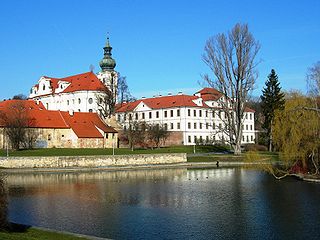
Břevnov Monastery is a Benedictine archabbey in the Břevnov district of Prague, Czech Republic. It was founded by Saint Adalbert, the second Bishop of Prague, in 993 AD with the support of Bohemian Duke Boleslaus II. The first Benedictine male monastery in Bohemia, it also has the oldest tradition of beer brewing in the Czech Republic. Brewing was interrupted several times in the history, but up to today, the Břevnov Monastery Brewery brew its beer here.
45. Narození Panny Marie
The Church of the Nativity of the Virgin Mary in Prague 4–Michle is a Baroque Roman Catholic parish church, originally built as a chapel of the Virgin Mary and the Fourteen Holy Helpers in 1724. Near the church is the building of the Michle parish, which is spiritually administered. The church is protected as an immovable cultural monument of the Czech Republic.
46. Panna Maria Vítězná
The Church of Our Lady Victorious at White Mountain in Řepy in the Prague 17 district is a place of pilgrimage near the site of the Battle of White Mountain. It is located north of Karlovarská Street and southeast of Bílá hora itself in the cadastral area of Řepy, it is also one of the most important monuments of this district. The pilgrimage site with the Church of Our Lady Victorious has been a national cultural monument since 2018.
Wikipedia: Kostel Panny Marie Vítězné (Bílá hora) (CS), Heritage Website
47. Nový hrad
The New Castle near Kunratice is the ruins of a royal Gothic castle in the Kunratice Forest on a wooded promontory surrounded by the Kunratický brook. It is located in the Kunratice district of Prague. The ruins have been protected as a cultural monument since 1965.
48. Kolovratský palác
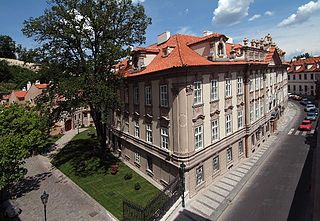
The Kolowrat Palace in Valdštejnská Street is a late Baroque palace by Ignác Jan Nepomuk Palliardi in Valdštejnská Street in Prague's Lesser Town. The palace is part of the seat of the Senate of the Parliament of the Czech Republic and is adjacent to the Small Fürstenberg Palace and the Kolowrat Garden, which is part of the Palace Gardens complex under Prague Castle. The palace has been a cultural monument since 1964; it is also part of the national cultural monument Seat of the Parliament of the Czech Republic.
49. zámek Koloděje
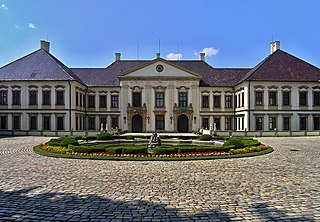
Koloděje Chateau is a castle rebuilt into a Baroque chateau in Koloděje in Prague. It is located in the Prague-Koloděje district on the eastern outskirts of Prague. It was built near the core of the former village of Koloděje in the entrance part of the extensive Koloděje Game Reserve reserved in the direction of Hájek. The chateau is protected as a cultural monument of the Czech Republic.
50. Primátor Jan Podlipný
Jan Podlipný was a Prague lawyer, mayor of Prague (1897–1900) and a member of the Czech Provincial Assembly for the Young Czech Party, the first mayor of the Czech Sokol Community (1889–1906). He organized the Collection of Laws concerning the state law of the Kingdom of Bohemia (1882) and was also the secretary of the Legal Union. He was a man of rare character and noble morals. His wife was an important association official Anna Podlipná.
51. Memorial to the Victims of Communism
The Memorial to the victims of Communism is a series of statues in Prague commemorating the victims of the communist regime in Czechoslovakia between 1948 and 1989. It is located at the base of Petřín hill, Újezd street in the Malá Strana or the Lesser Town area.
52. Jan Hus Memorial
The Jan Hus Memorial stands at one end of Old Town Square, Prague in the Czech Republic. The huge monument depicts victorious Hussite warriors and Protestants who were forced into exile 200 years after Hus in the wake of the lost Battle of the White Mountain during the Thirty Years' War, and a young mother who symbolises national rebirth.
53. Nová libeňská synagoga
The New Libeň Synagogue is located in Prague 8 at the Palmovka crossroads. Today, it is sporadically used for cultural purposes, and several times a year it is used by members of the Prague Jewish Community, especially the Czech Union of Jewish Youth, for its original purpose, i.e. for worship, most recently for the celebration of the Passover holiday in the spring of 2019/5779.
54. Nalezení svatého Kříže
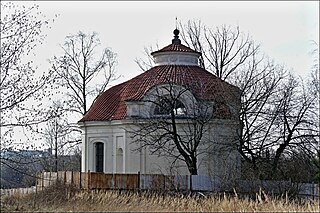
The Baroque Church of the Holy Cross and St. Helena is located in Prague-Stodůlky in the part called Háje, outside the built-up area, on the southern side of railway line 122 between the Praha-Stodůlky stop and the Praha-Zličín railway station, about 150 metres west of the railway bridge over Jeremiášova Street, above the Bílý Beránek bus stop in Za Hájčí dvorcem Street, south of Pod viaduktem Street, the rear side of which is on the opposite side of the railway line. A gravel path leads around the church from Jeremiášova Street to the gardening settlement and to the courtyard of Háje. A road leads from Hájčí dvůr to the temple. The church is protected as a cultural monument of the Czech Republic.
55. Nová scéna Národního Divadla
The New Stage of the National Theatre is a modern postmodern theatre building that was built in Prague's New Town on Národní třída in 1977–1983. It is sometimes also referred to as brutalist. In 2021, the New Stage building was declared a cultural monument.
56. Operace Anthropoid
The Operation Anthropoid Memorial is a monument in Libeň, Prague that commemorates Operation Anthropoid, an ambush on senior Nazi official Reinhard Heydrich by Czechoslovakian partisans on 27 May 1942 which resulted in his death one week later.
57. The House of the Mother of the Suicide
The House of Suicide and the House of Mother Suicide is the works of art on the border of sculptures and buildings of American architect John Hejduk. They are dedicated to Jan Palach, who burned himself on 16 January 1969 in the upper part of Prague's Wenceslas Square in Prague. The inspiration for Hejduk became the poem David Shapiro entitled Jan Palach Funeral from 1969. For the first time, sculptures were realized in 1986–1990 by a group of students of Georgia Institute of Technology in Atlanta led by James Wiliamson and placed them in the Institute hall. In September 1991, during his visit to Prague, John Hejduk donated sculptures to President Václav Havel and the Czechoslovak people. Their wooden mock -ups were built at Prague Castle on that occasion, from where they were removed after 2000. Since then, several times have been considered to be the definitive placement of sculptures, for example in the Czech Technical University in Prague 6. They were definitely made of steel only in 2015 and located in Prague's Alšovo nábřeží. The edge of the square ground plan of both buildings has a length of 2.7 meters, the height including tips is 7.3 meters. The ceremonial unveiling took place on 16 January 2016 in the presence of Hejduk's daughter Renata.
58. Nerudova Street
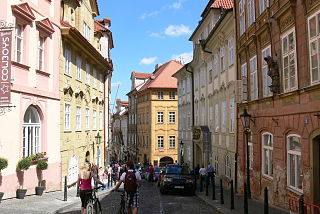
Nerudova Street is a street in the Lesser Town in Prague 1 that leads from the upper or northwestern corner of Lesser Town Square westwards to Prague Castle. It is one of the most interesting streets in Prague for tourists. It is part of the former Royal Route, through which the coronation procession of Czech kings used to cross the Charles Bridge to the Castle. At the upper end, it branches off into Ke Hradu and Úvoz streets. From this place, the Town Hall Stairs also go up in a northwest direction.
59. Barrandovské skály
The Barrandov Rocks are a national natural monument on the left bank of the Vltava River, on the southwestern edge of the capital city of Prague. The care of the Barrandov Rocks NNM is entrusted to the Central Bohemia Regional Office of the Nature Conservation Agency of the Czech Republic.
60. Prague Public Transport Museum
The Museum of Public Transport in Prague was opened in May 1993 by the Prague Public Transport Company in the Střešovice depot in connection with the termination of its regular operation in 1992. Vehicles from the museum collections are protected as technical monuments, and the depot itself was declared a technical monument at the end of 1991.
Wikipedia: Muzeum městské hromadné dopravy v Praze (CS), Website
61. Saint Nicholas
The Church of Saint Nicholas is a Baroque church in the Lesser Town of Prague. It was built between 1704 and 1755 on the site where formerly a Gothic church from the 13th century stood, which was also dedicated to Saint Nicholas. It has been described as the greatest example of Prague Baroque.
Wikipedia: St. Nicholas Church (Malá Strana) (EN), Heritage Website
62. Saint John of Nepomuk
The Church of St. John of Nepomuk, sometimes also known as the Military Church, is a Baroque church at the Ursuline Monastery by Kilian Ignaz Dientzenhofer. The church is located on the corner of U kasáren and Kanovnická streets in Prague's Hradčany, approximately 200 meters from Hradčanské Square, near Nový Svět.
Wikipedia: Kostel svatého Jana Nepomuckého (Hradčany) (CS), Heritage Website
63. svatý Václav
The Church of St. Wenceslas in Prosek is a Roman Catholic parish church in the Prosek district of Prague. This Romanesque building is its oldest architectural monument. It was built on the border of the plateau and the slope of the Rokytka valley probably before the establishment of today's settlement, and during its existence it underwent a number of reconstructions.
64. Topičův dům
The Topič House, also known as the Topič Salon or the U Topičů House, is a building of a gallery and former publishing house in Prague 1, in the Old Town district of Národní třída, connected with house No. 339/11. To this day, it draws on its rich history and is referred to as the longest operating private gallery in Prague.
65. National Museum of Agriculture
The National Museum of Agriculture in Prague's Letná district is located in Kostelní Street in the Prague 7 district. The functionalist building in the immediate vicinity of the National Technical Museum building is also the main exhibition building and the administrative headquarters of the institution, which has a number of other workplaces where individual sub-collections and scientific curatorial workplaces are located.
66. svatý Norbert
St. Norbert's Church in Prague-Střešovice is a Roman Catholic parish church in Střešovice, Prague 6. The Neo-Romanesque church stands on the hill of the Prague Plateau at an altitude of about 340 m. Its tower is the dominant feature and at the same time the highest point of this district. The church is protected as a cultural monument.
67. svatý Jan Nepomucký na Skalce
The Church of St. John of Nepomuk at Skalka is a Roman Catholic church in Prague's New Town, Vyšehradská Street. The church was built in the 30s of the 18th century by the Prague architect Kilian Ignaz Dientzenhofer and is an important monument of the Czech dynamic Baroque. Since May 3, 1958, the church has been a registered cultural monument under number 40104/1-1224.
68. Malý Fürstenberský palác

The Little Fürstenberg Palace is a smaller building in the late Baroque form in Valdštejnská Street no.12 in Prague on Malá Strana. The palace was created by merging older buildings under the Kolovrat garden and is connected to the rear wing of the Kolovrat Palace. Both palaces are part of the Senate of the Parliament of the Czech Republic, which is a national cultural monument. The palace itself has been protected since 1964.
69. Saint Wenceslas
The Church of St. Wenceslas in Smíchov is a Roman Catholic parish church on 14th October Square in Smíchov, Prague. The Neo-Renaissance three-nave basilica with two fifty-metre towers is consecrated to the Czech patron saint St. Wenceslas. It was built between 1881 and 1885 according to the plans of architect Antonín Viktor Barvitius. Ludvík Šimek and Stanislav Sucharda participated in the sculptural decoration, while the paintings, mosaics and stained glass windows were designed by František Sequens, Josef Matyáš Trenkwald, Maxmilián Pirner and Zikmund Rudl. The exterior of the building is one of the most important examples of Czech Neo-Renaissance architecture, the interior is conceived in the style of an early Christian Roman basilica.
70. svatý Jan Křtitel Na prádle
The Church of John the Baptist Na Prádle is a Romanesque-Gothic church first mentioned in 1142 in the southern part of the Lesser Town in Prague 1, in the wedge of Říční and Všehrdova Streets, near Čertovka and Kampa Island. The church is protected as a cultural monument of the Czech Republic. The name reminds us that the church served as a laundry after its abolition. Today it serves as the parish church of the Czechoslovak Hussite Church.
Wikipedia: Kostel Jana Křtitele Na Prádle (CS), Heritage Website
71. Petřín
Petřín is a hill in the centre of Prague, Czech Republic. It rises 327 m above sea level and some 130 m above the left bank of the Vltava River. The hill, almost entirely covered with parks, is a favorite recreational area for the inhabitants of Prague. The hill is featured prominently in Franz Kafka's early short story "Description of a Struggle" and briefly in Milan Kundera's novel The Unbearable Lightness of Being.
72. DOX
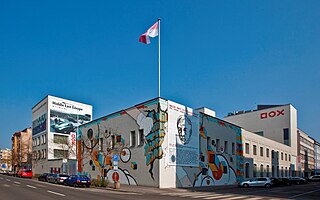
Center for Contemporary Art DOX is a multifunctional space focused on presentation of contemporary art, architecture and design. It was created by the reconstruction of the former factory in Prague's Holešovice district and was opened in 2008. The name DOX is derived from the Greek word doxa, which means, among other things, the way of understanding things, opinion, belief.
73. Jan Bouchal
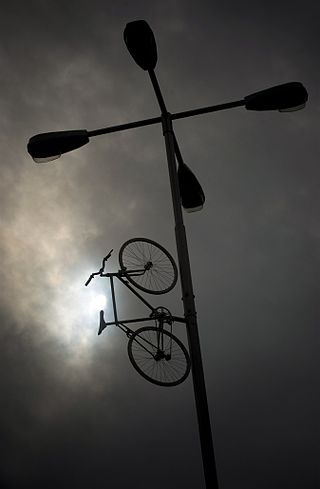
Bike to Heaven is a memorial dedicated to the promoter of urban cycling, Jan Bouchal, who died in a collision with a car, which according to the police investigation he caused, and to all other cyclists who died in traffic accidents in Prague. It consists of a fourteen-metre-high street lamp on which a bicycle pointing to the sky is suspended vertically at a height. The entire monument is "silver-plated" with palladium petals and the wheel and top of the lamp can rotate in the wind. The memorial is located at the busy Prague intersection of Dukelských hrdinů Street and the Kapitána Jaroše Embankment, at the place where Jan Bouchal was fatally injured in a car accident in 2006. The author of the monument is sculptor Krištof Kintera, the monument was unveiled on September 9, 2013, after seven years of preparations. It was initiated by the Auto*Mat association and financed from a public collection announced by this association.
74. Maisel Synagogue
The Maisel Synagogue is a Jewish congregation and synagogue, located in the former Jewish quarter of Prague, in the Czech Republic. The synagogue was built at the end of the 16th century in the Gothic Revival style. Since then its appearance has changed several times. The synagogue belongs to the Jewish Community of Prague and is administered by the Jewish Museum in Prague as a part of its exhibitions.
75. svatý Václav
The Church of St. Wenceslas is located in the middle of the Bohnice Psychiatric Hospital opposite the main entrance. It is an important work of the architect and designer Václav Roštlapil, who was also the author of the Straka Academy – the seat of the government of the Czech Republic. The church is built in the Art Nouveau style and the construction work was carried out by the company of the prominent First Republic businessman and politician Otakar Nekvasil. Despite the historical circumstances, the church currently serves its original purpose.
76. Smíchovská synagoga
The Smíchov Synagogue is a former Reform Jewish congregation and synagogue, located at Stroupežnického 32, Smíchov, in Prague, in the Czech Republic. Completed in 1863, the former synagogue was remodelled in 1931 in the Functionalist style. After the World War II, the building was used for secular purposes because the Smíchov Jewish community ceased to exist in the Shoah. Since 1998, the building has been used as an archive of the Jewish Museum in Prague.
77. svatý Antonín Paduánský
The Church of St. Anthony of Padua in Holešovice is a Roman Catholic parish church built in 1908–1911 in the pseudo-Gothic style according to the project of architect František Mikš. It is located on Strossmayerovo Square in Prague 7-Holešovice in the former village of Bubny. Since 2015, it has been protected as an immovable cultural monument.
78. svatý Haštal
St. Castulus church is a Gothic church with Romanesque and Baroque elements. It is located on the Castulus square, in Old town near Convent of Saint Agnes. It is the only church in the Czech Republic consecrated to Saint Castulus.
Wikipedia: Saint Castulus Church, Prague (EN), Heritage Website
79. Šítkovská vodárenská věž
The Šítkovská Water Tower, also called the Upper New Town Tower, is a water tower from the end of the 15th century on the right bank of the Vltava River in Prague's New Town in the immediate vicinity of today's building of the Mánes Association of Fine Artists, not far from Jirásek Square in the area of the former Šítkovské mills.
80. Panna Marie Matka ustavičné pomoci
Church of Our Lady of Mother's Constance Aid and St. Kajetan, also called Kajetáns, is a Roman Catholic monastery church in Nerudova Street in Prague 1 on Malá Strana. It was built along with the Theatin monastery. Together with the monastery, the church has been protected since 1964 as a national cultural monument.
Wikipedia: Kostel Panny Marie Matky ustavičné pomoci (Praha) (CS), Heritage Website
81. Old Castle Stairs
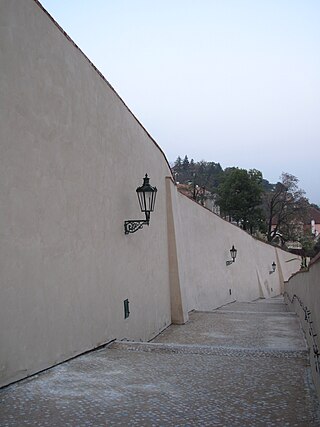
The Old Castle Stairs are a pedestrian-only public road that connects the Lesser Town district with the eastern part of Prague Castle in the Prague 1 district, with the border between Hradčany and the Lesser Town actually running at their upper end on the edge of the observation deck at the eastern gate of Prague Castle.
82. Betlémská kaple
The Bethlehem Chapel in Žižkov is a cubist building, serving as a parish church of the Žižkov congregation of the Evangelical Church of Czech Brethren. It is located in Prokopova Street inside a block of apartment buildings.
83. Semafor
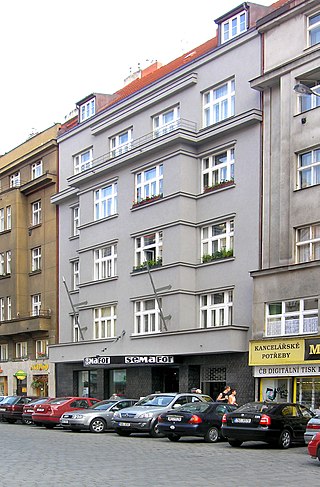
Semafor is a theatre in Prague, Czech Republic, established by Jiří Suchý and Ferdinand Havlík in 1959. Suchý has performed there for many decades and is the current owner. The theatre was a starting point for many famous Czech musicians, including Karel Gott and Hana Hegerová.
84. Stětí svatého Jana Křtitele
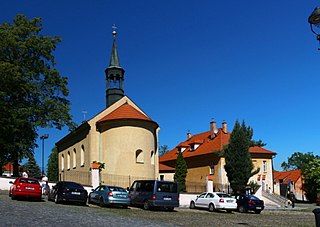
The Church of the Beheading of St. John the Baptist in Dolní Chabry is a Romanesque branch church standing on a small hill on Bílenecké Square in Prague-Dolní Chabry. It is a Romanesque rectangular church with an apse and Romanesque paintings. Below the church, the foundations of three older shrines have been preserved, of which the rotunda had a floor covered with relief decorated tiles.
Wikipedia: Kostel Stětí svatého Jana Křtitele (Dolní Chabry) (CS)
85. Saint Apollinaire
The Church of St Apollinaire is located in New Town in Prague in the street Apolinarska on the hill called Vetrov. This Gothic church was built approximately between years 1360–1390. The church was established by Charles IV in 1362. Nowadays Roman Catholic Church is located here but it was administrated also by the Chemin Neuf community. The church is protected as a cultural heritage since 1958.
86. Letná Park
Letná Park is a large park on Letná hill, built on a plateau above steep embankments along the Vltava River in Prague, Czech Republic. Letná's elevation and location afford commanding views of the Prague Old Town.
87. Děvín
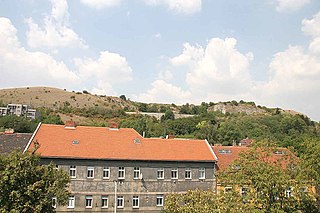
Děvín is a distinctive hill in Prague above the left bank of the Vltava River, on the border of Hlubočepy and Radlice. The area is part of the Prokopské and Dalejské údolí nature park, the peak falls into the Prokopské údolí national nature reserve. On the northern side of the hill there is the natural monument Ctirad, from the south, east and north the hill is bordered by the arch of the railway line Prague Semmering.
88. Saint Joseph
St. Joseph's Church in the Lesser Town in Prague 1 is a Roman Catholic church of the Congregation of English Virgins. The early Baroque church was built between 1686 and 1692 as part of the then Carmelite convent and is jointly protected as an immovable cultural monument of the Czech Republic.
89. svatá Anna
The Church of St. Anne in Prague 3-Žižkov is a Roman Catholic branch church from 1911. It was built in the style of the so-called Beuron Art Nouveau according to the project of architect Eduard Sochor. The church of st. St. Anne's Church is a subsidiary church of the Žižkov parish at the Church of St. Procopius.
90. Nanebevzetí Panny Marie
The Church of the Assumption of the Virgin Mary is a Roman Catholic church built on a small hill in Prague 4-Modřany. The church surrounds the Modřany cemetery and in its immediate vicinity there is also a rectory building.
Wikipedia: Kostel Nanebevzetí Panny Marie (Modřany) (CS), Website
91. Saint Stephen
The St. Stephen's Church is located in Štěpánská street in Prague 2, New Town. It is a church from the second half of the 14th century, which was built near the Romanesque St. Stephen rotunda. The church was dedicated to St. Stephen, traditionally regarded as the first martyr of Christianity, who was, according to the Acts of the Apostles, a deacon in the early church at Jerusalem who aroused the enmity of members of various synagogues by his teachings. And then rotunda was dedicated to St. Longin.
92. Českobratrská modlitebna
The Evangelical Church of the Evangelical Church of Czech Brethren is a sacral building built between 1930 and 1931 in Prague's Smíchov district, in Na Doubkové Street. The author of its ideological design was Filip Křížek, whose son Jaroslav designed the building. However, the congregation did not have enough funds for the construction of the church, so it decided to issue lottery tickets, the proceeds of which helped to cover part of the costs. Despite this, the congregation got into debt and paid off the installments until World War II. The ceremonial opening of the new church building took place on September 28, 1931 and the first sermon was delivered by university professor František Bednář. At the beginning of the 21st century, the members of the congregation considered a major reconstruction of the interior of the house. Although the representatives of the congregation first chose the design by architect Hana Seho, it did not gain the support of the other members of the congregation, and therefore it was abandoned. Another tender resulted in a design by the MCA studio, which is finally implemented.
93. New Mill Water Tower
At the beginning of the Middle Ages, Prague was supplied with water from private and public wells, which, however, were often clogged with waste from sumps. Water was also distributed through open troughs or water mains made of wood, stone, clay or lead, but these water mains were intended only for church, aristocratic and royal buildings. Together with the foundation of the New Town of Prague in 1348, the first water tower was built, which pumped Vltava water and distributed it to the public fountains of the New Town. Gradually, four municipal waterworks were established: the Old Town waterworks for the Old Town of Prague, the Petržilkovská Waterworks for the Lesser Town, the Šítkovská Waterworks for the upper part of the New Town and the Novomlýnská Waterworks for the lower New Town of Prague.
94. Woodrow Wilson
The Woodrow Wilson Monument, created by Czech-American sculptor Albin Polasek, is installed outside Praha hlavní nádraží in Prague, Czech Republic. It was unveiled in October 2011, and honors the 28th president of the United States, Woodrow Wilson.
95. Občanská plovárna
Today, the Civic Swimming Pool is only a listed building between the Vltava Embankment and the "inland" section of Edvard Beneš Embankment Street in Prague, between the Strakova Academy in the Lesser Town and the Čech Bridge. The Civic Swimming Pool and the nearby Chapel of St. Mary Magdalene are more or less the only buildings that stand in a small strip of Holešovice belonging to the Prague 1 district, and their address is often given as the Lesser Town. The original swimming pool, called the Military Swimming Pool after the founding of the Civic School, was already in the Lesser Town, on the site of today's Straka Academy.
96. Nejsvětější Trojice
The Church of the Holy Trinity in Spálená Street in Prague's New Town is a Baroque three-nave building with a tower from 1713 built according to the project of Octavio Broggio as part of the later abolished monastery of the Order of the Trinitarians, or the Order of the Holy Trinity for the Redemption of Captives, a Catholic order whose mission at that time was primarily to ransom Christians from Turkish captivity. The church is protected as a cultural monument and is located in the immediate vicinity of the Faculty of Education of Charles University. At the end of 2005, the local Roman Catholic parish was abolished and the church was given to Slovak Greek Catholics.
Wikipedia: Kostel Nejsvětější Trojice (Praha, Spálená ulice) (CS), Diocese, Heritage Website
97. Panna Maria pod Řetězem
The Church of Our Lady under the Chain is a Roman Catholic monastery church attached to the Commandery of the Order of St. John. It is the torso of an unfinished larger medieval Maltese church, begun in the Romanesque style. The current church is only the chancel of the intended temple. Together with the neighbouring buildings of the Lesser Town Maltese Commandery, it is protected as a cultural monument. It is located in Lázeňská Street in Prague 1 in the Lesser Town.
Wikipedia: Kostel Panny Marie pod řetězem (CS), Heritage Website
98. svatý Vojtěch
The Church of St. Adalbert in Prague 8-Libeň is a wooden Art Nouveau sacral building from 1904 to 1905 by architect Emil Králíček, who worked in the design office of builder Matěj Blecha. At present, it serves the Roman Catholic Church, it is a parish church. The church is located in the immediate vicinity of the Libeň Sokol Hall in U Meteoru Street.
99. Czech Museum of Music
The Czech Museum of Music is a specialized part of the National Museum in Prague, focusing on materials with musical and instrumental themes. It is located in the rebuilt former Church of St. Mary Magdalene at Karmelitská 388/2 and 4, Újezd 388/50, Hellichova 388/10, in the Lesser Town, Prague 1.
100. Saint Mary Magdalene
The Chapel of St. Mary Magdalene in Prague on the Edvard Beneš Embankment is a circular Baroque chapel and the first building to be moved to Czechoslovakia in 1956. It stands on the outskirts of Holešovice near the border of the Lesser Town, in a small strip of Holešovice territory, which belongs to the Prague 1 district.
Share
How likely are you to recommend us?
Disclaimer Please be aware of your surroundings and do not enter private property. We are not liable for any damages that occur during the tours.
